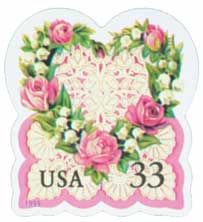
# UX300 - 1999 20c Victorian Love PC FDC
First Cut-To-Shape U.S. Stamps
For most of its history, the USPS and its predecessor, the US Post Office Department, stuck to issuing conventionally shaped stamps – squares and rectangles. They made a major leap in 1997 when they issued their first triangle stamp, for the Pacific ’97 stamp show.
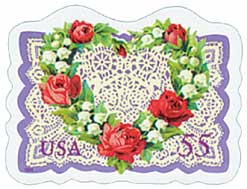
Other countries experimented with irregularly shaped stamps much earlier – many in the 1960s. The USPS began producing self-adhesive stamps on a wide scale in the 1990s and soon began using die-cut perforations. Die-cut perforations are cut by a metal device to produce perforation-like wavy lines for separating stamps. In fact, die-cut perforations could take on any shape, so the USPS decided to take that idea and run with it.
On January 28, 1999, the USPS issued a pair of Victorian Love stamps for use on wedding invitations and reply cards, as well as Valentines or other happy greetings. Fittingly, the stamps were issued in Loveland, Colorado, which is also known as “America’s Sweetheart City.”
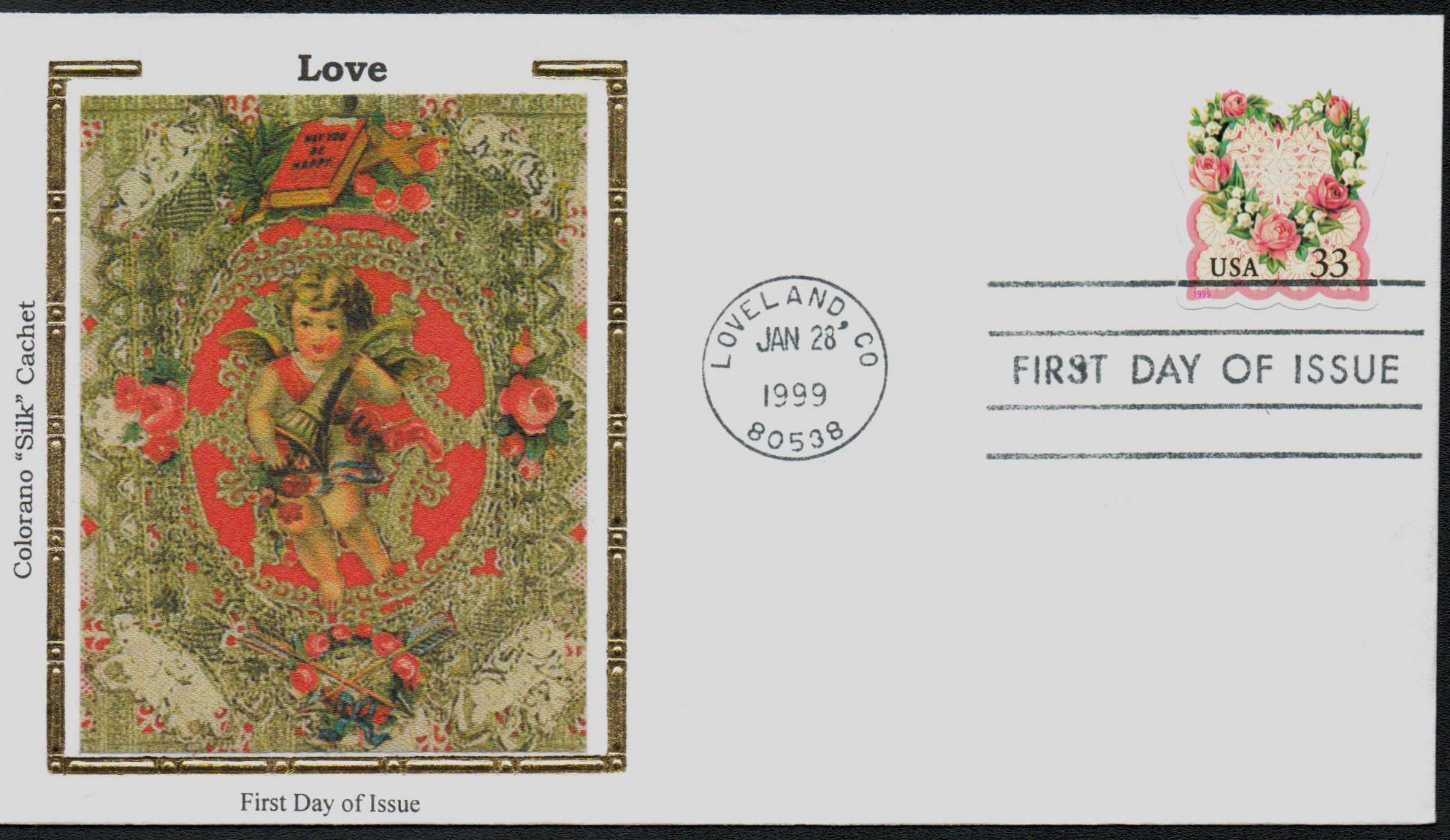
Each design carried a Victorian lace heart. And the stamp perforations were die-cut to match these shapes – for the first time ever. The top of each stamp follows the outline of the heart, while the bottom is scalloped, to match the design.
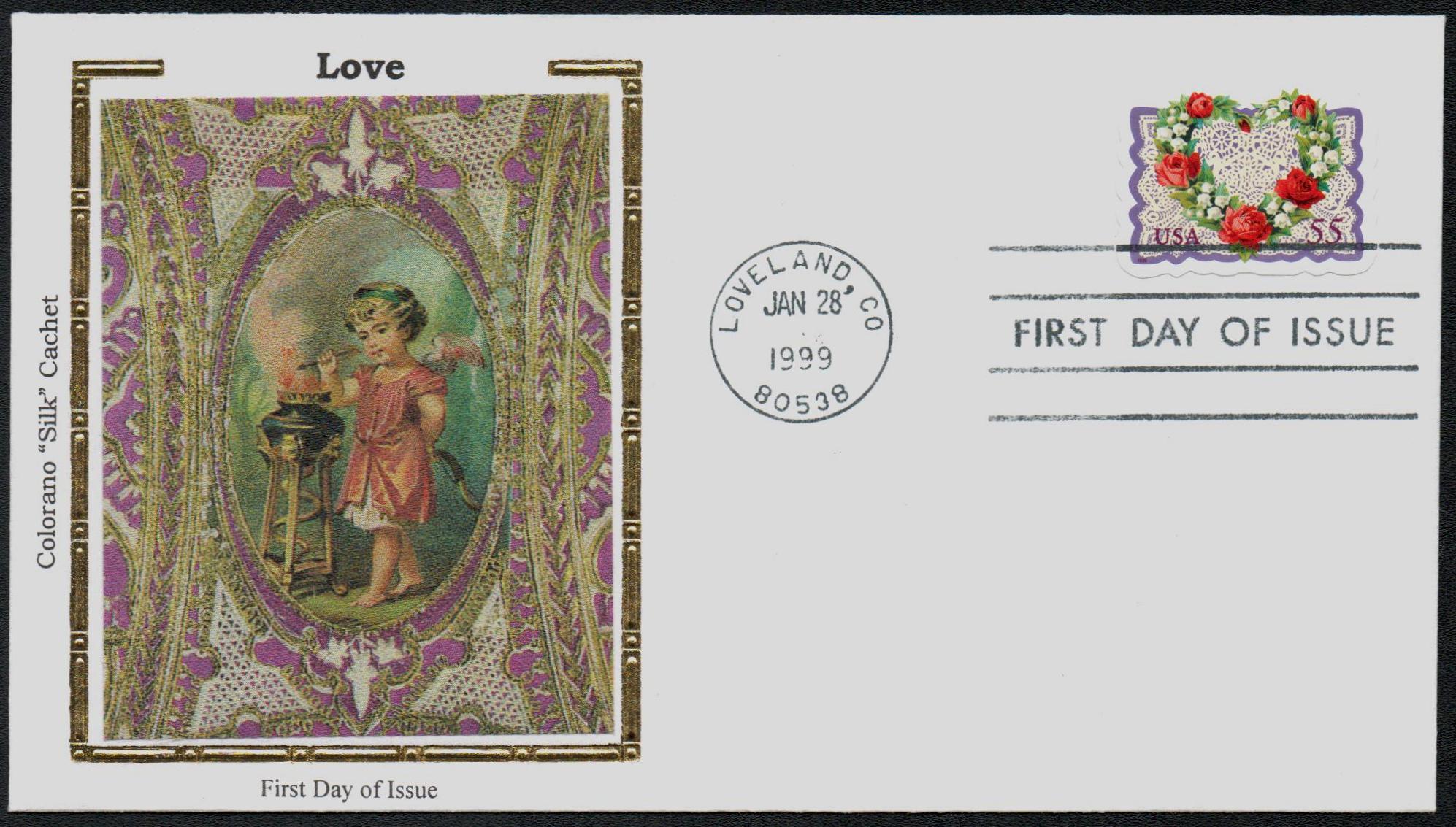
Victorian artifacts were used to create each stamp. The floral-heart design featured on both denominations was taken from a valentine greeting card decorated by an unknown German artist in 1895. The background of the 33-cent stamp was designed after a turn of the century American chocolate or biscuit paper-lace box liner. On the 55-cent stamp, the background was taken from an English paper lace valentine, circa 1885.
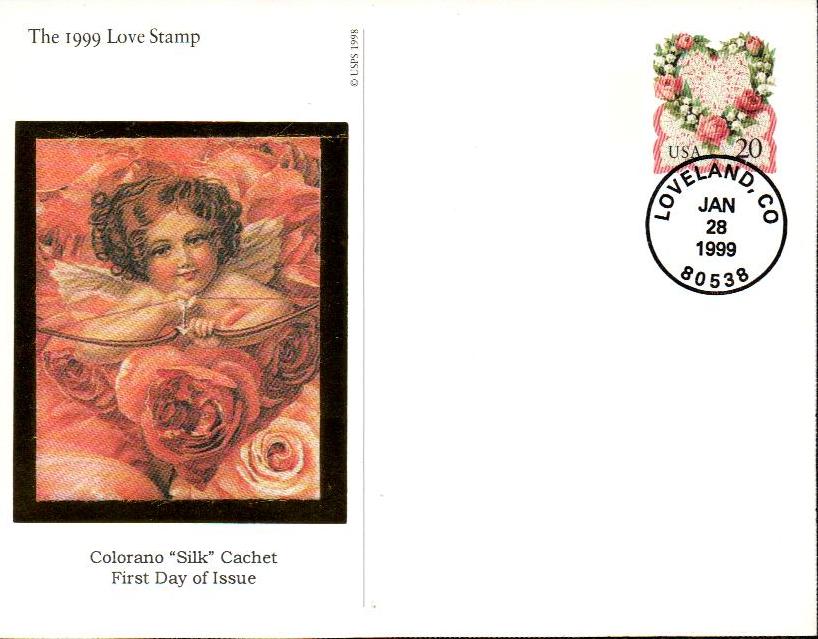
The stamps proved popular with the public, with one USPS representative saying, “There’s been a tremendous response to this stamp for two reasons: the artwork is beautiful and this is the first time it is die-cut.” One postal worker also stated that they were the prettiest stamps they’d ever seen and were a big hit, especially with brides.
First Cut-To-Shape U.S. Stamps
For most of its history, the USPS and its predecessor, the US Post Office Department, stuck to issuing conventionally shaped stamps – squares and rectangles. They made a major leap in 1997 when they issued their first triangle stamp, for the Pacific ’97 stamp show.

Other countries experimented with irregularly shaped stamps much earlier – many in the 1960s. The USPS began producing self-adhesive stamps on a wide scale in the 1990s and soon began using die-cut perforations. Die-cut perforations are cut by a metal device to produce perforation-like wavy lines for separating stamps. In fact, die-cut perforations could take on any shape, so the USPS decided to take that idea and run with it.
On January 28, 1999, the USPS issued a pair of Victorian Love stamps for use on wedding invitations and reply cards, as well as Valentines or other happy greetings. Fittingly, the stamps were issued in Loveland, Colorado, which is also known as “America’s Sweetheart City.”

Each design carried a Victorian lace heart. And the stamp perforations were die-cut to match these shapes – for the first time ever. The top of each stamp follows the outline of the heart, while the bottom is scalloped, to match the design.

Victorian artifacts were used to create each stamp. The floral-heart design featured on both denominations was taken from a valentine greeting card decorated by an unknown German artist in 1895. The background of the 33-cent stamp was designed after a turn of the century American chocolate or biscuit paper-lace box liner. On the 55-cent stamp, the background was taken from an English paper lace valentine, circa 1885.

The stamps proved popular with the public, with one USPS representative saying, “There’s been a tremendous response to this stamp for two reasons: the artwork is beautiful and this is the first time it is die-cut.” One postal worker also stated that they were the prettiest stamps they’d ever seen and were a big hit, especially with brides.






